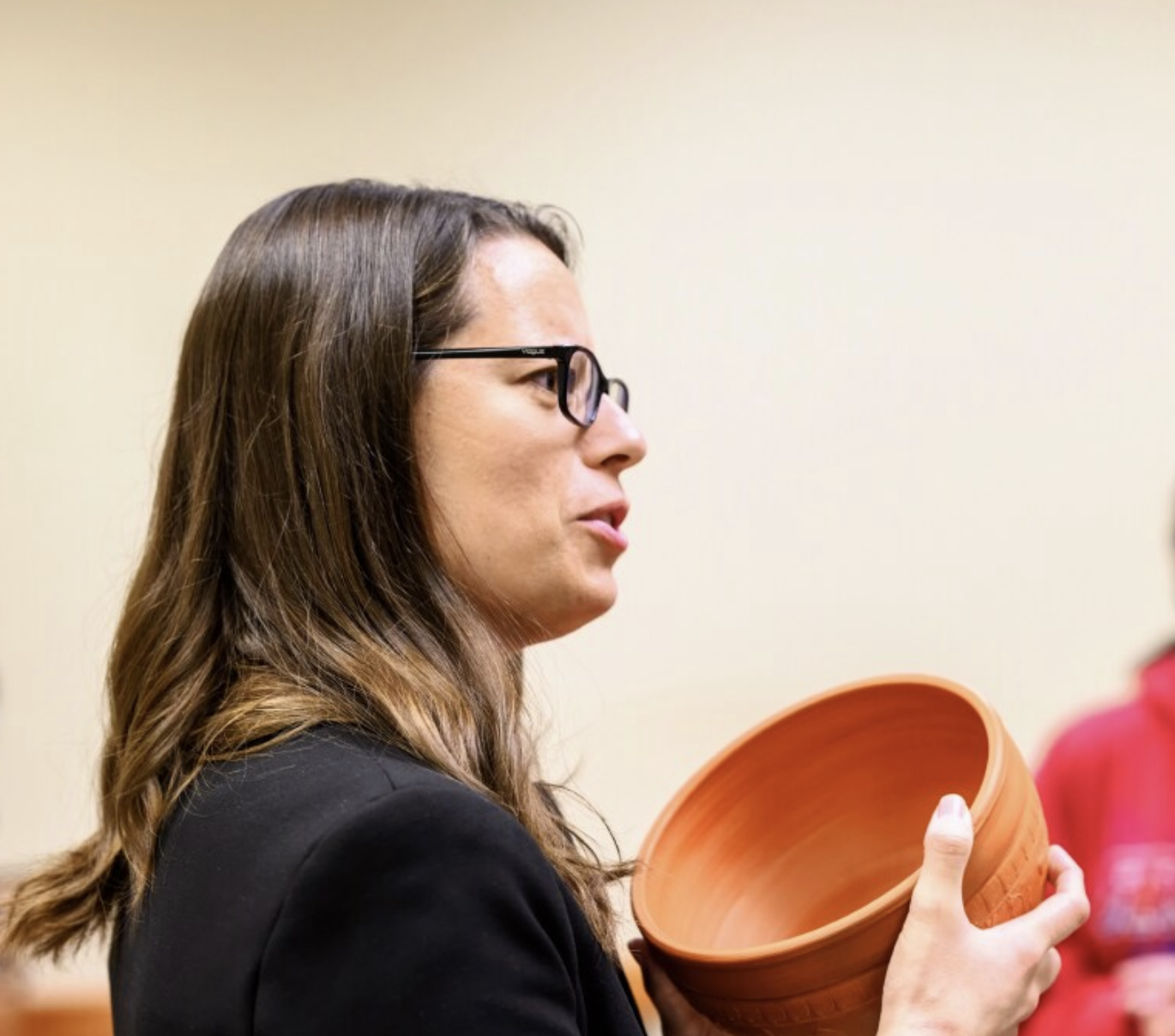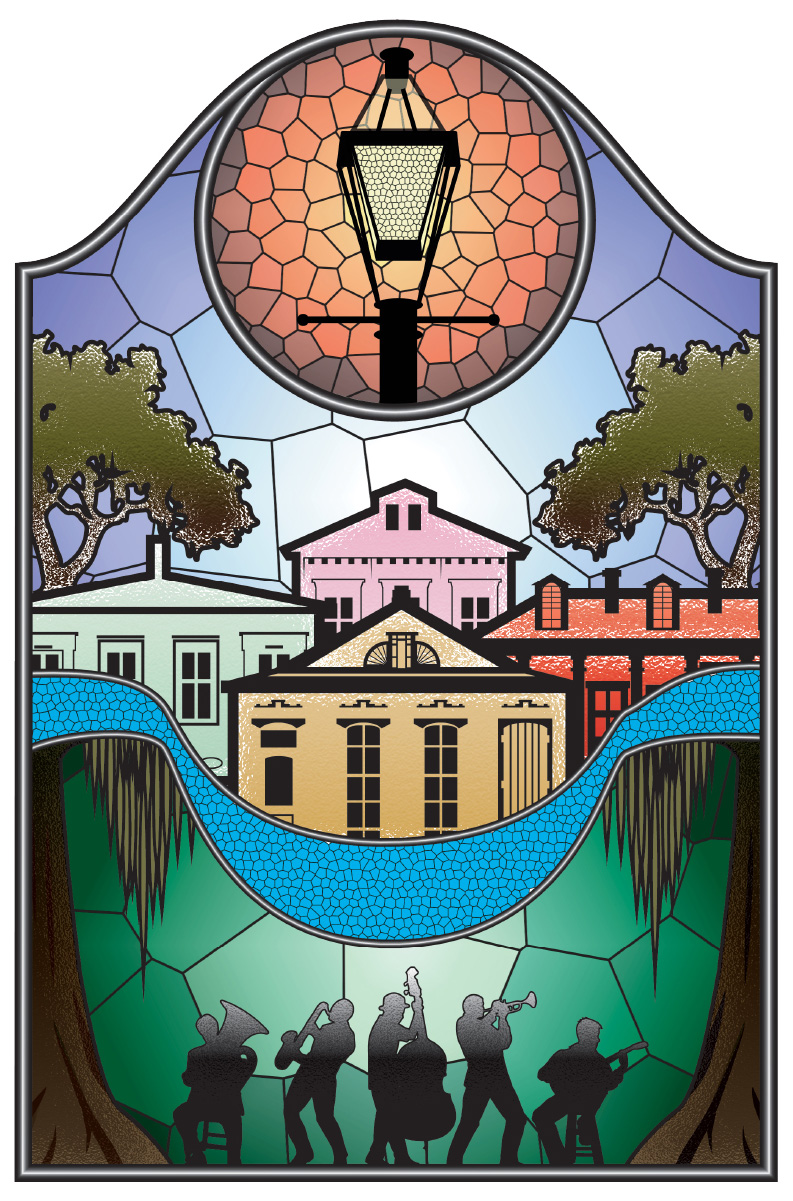Octavia Minor, a Wonder of a Woman
Caesar was exceedingly fond of his sister,
(Plutarch, Life of Antony 31.1)
who was, as the saying is, a wonder of a woman.
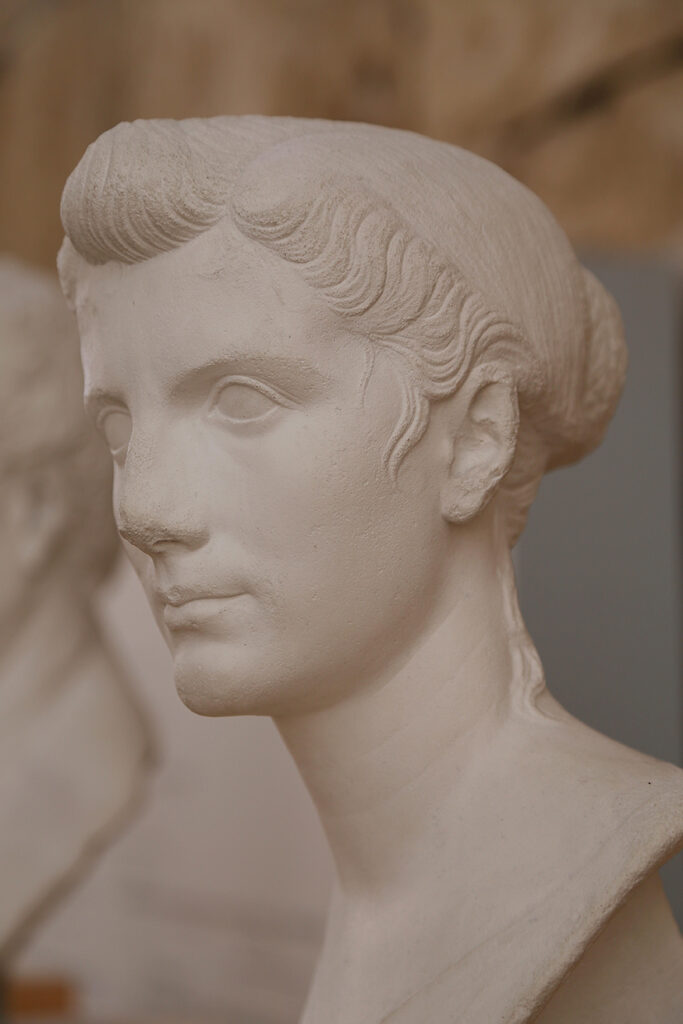
Roman women, especially if they were members of the upper class, acquired increased visibility in the last decades of the Roman Republic, as conflicts between different factions threatened even the most sacred institution of Roman society, the familia. Tales of women who had acted as intermediaries between two factions had been a constant of Roman historiography since its beginnings, but they were relegated to an almost mythical past, as in the case of the Sabine women (Livy, Ab Urbe Condita 1.13).
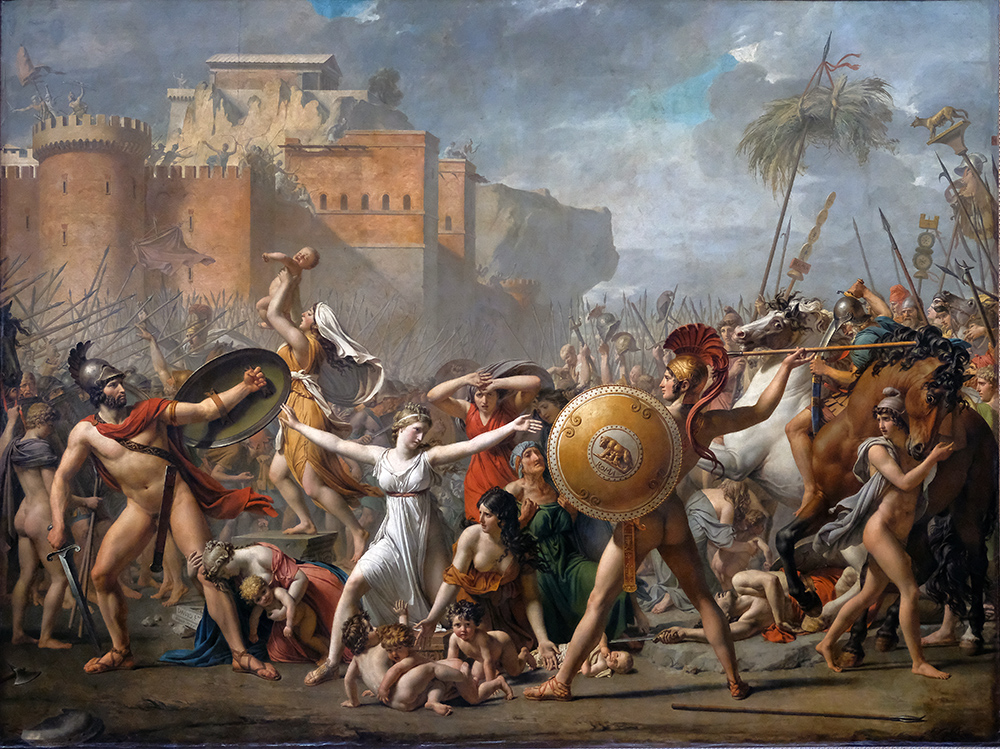
However, the political turmoil that characterized the last decades of the first century BC made the presence of women in the political arena a mere necessity, especially in the face of the death or political disgrace of their husbands. While direct political action on their part was always condemned, women did play a very important role in the resolution of conflicts, through their direct agency and, of course, through strategic marriages. The political advantages deriving from strategically devised marriages have been thoroughly studied, but much less attention has been directed to the direct agency of women in this respect. Of course, marriages were almost always decided by men, at least for what concerns first marriages, but it rested with the women on how to act within these constraints, and in recent years scholarship has increasingly focused on this aspect.
A famous example of marital piety leading to direct political action is represented by Turia, traditionally identified as the wife of Quintus Lucretius Vespillo, who saved her husband from the proscriptions orchestrated by the triumvirs in 43 BC and then obtained his pardon from the triumvir Lepidus, as famously narrated in her laudatio.
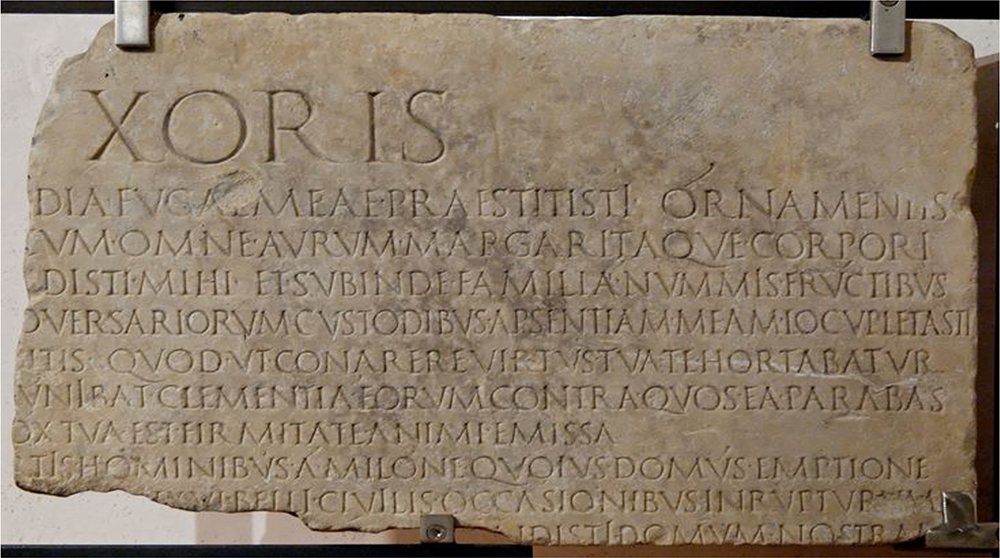
However, Roman women who took any sort of public action had to thread the very fine line between being lauded for their marital piety and being judged too masculine.
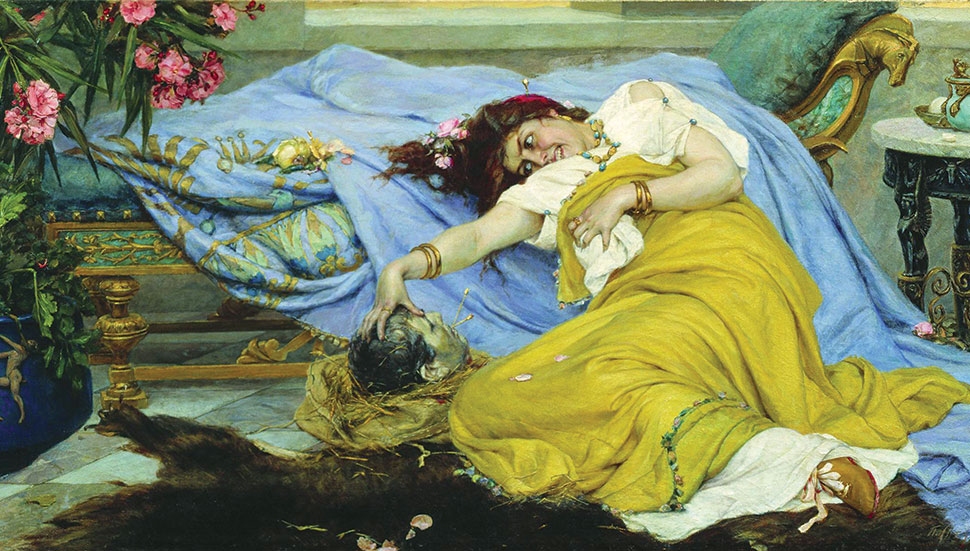
While Turia was clearly ascribed to the first group, Fulvia, the first wife of Mark Antony, was famously defined by Velleius Paterculus as having “nothing female about her besides her body.” The reason for such harsh judgement probably rests primarily with the political rivalry between Fulvia (supposedly serving Mark Antony’s interests) and Octavian, which resulted in the Perusine War of 41 BC and almost precipitated the final showdown between Antony and Octavian by almost a decade. Fulvia was the object of public slander not only at the hands of Octavian, who addressed her in a quite coarse epigram quoted in its entirety by Martial, but also of soldiers, as testified by the inscribed glandes from the battlefield of the Perusine War, where explicit obscenities were addressed at her.
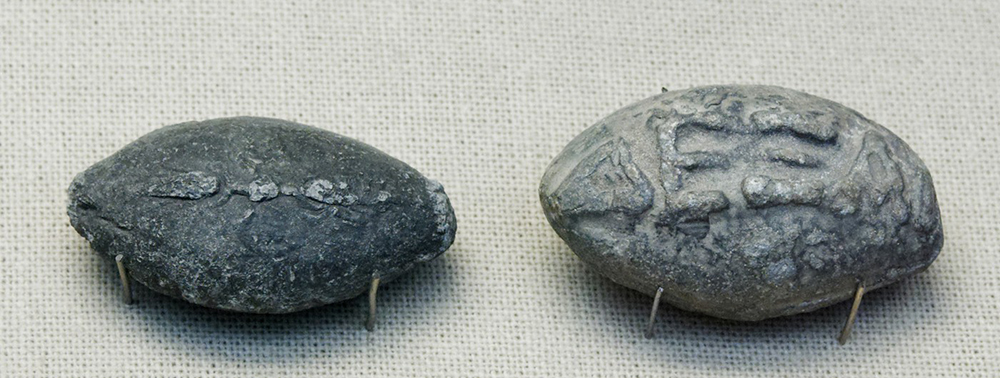
Not even Fulvia’s own husband, Mark Antony, appreciated her excess of political initiative and she is said to have died in exile in Sicyon, allegedly of heartbreak, while her husband was enjoying Cleopatra’s company. History, or better, historiography seems to have found a befitting end for this powerful woman.
However, public Roman hostility against Fulvia was proportional to her political importance and visibility, as evidenced by the fact that Fulvia was the first living Roman woman ever represented on coins. While there is still no consensus whether Fulvia was represented as Victory on a denarius issued by the mint of Lugdunum in 42 BC and on an aureus of 41 BC, her presence on Roman provincial coins could not be doubted. She appears as Victory on a coin issued by the city of Eumenea, who renamed itself Fulvia in her honor, and on a coin issued by Tripolis in Phoenicia, together with her husband Mark Antony.
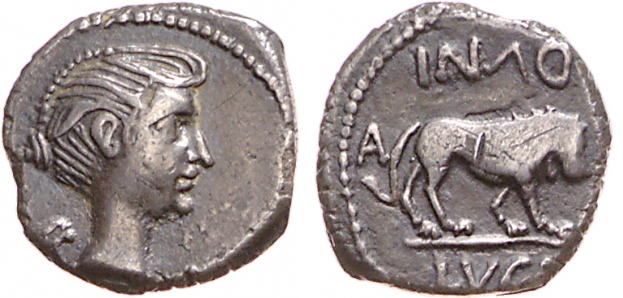
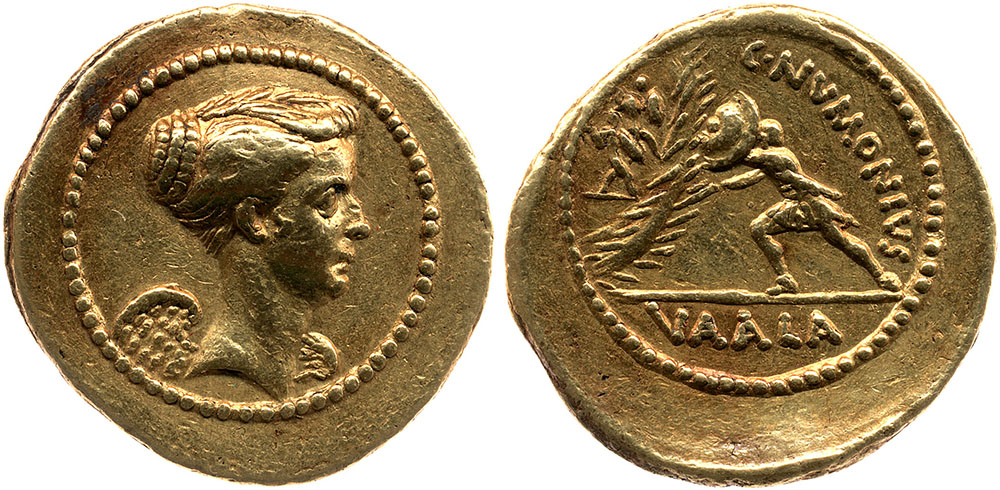
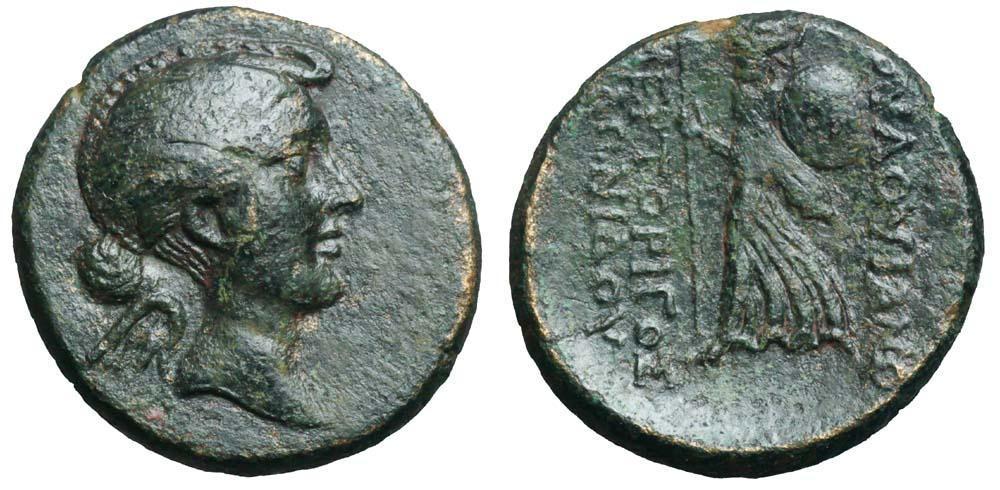
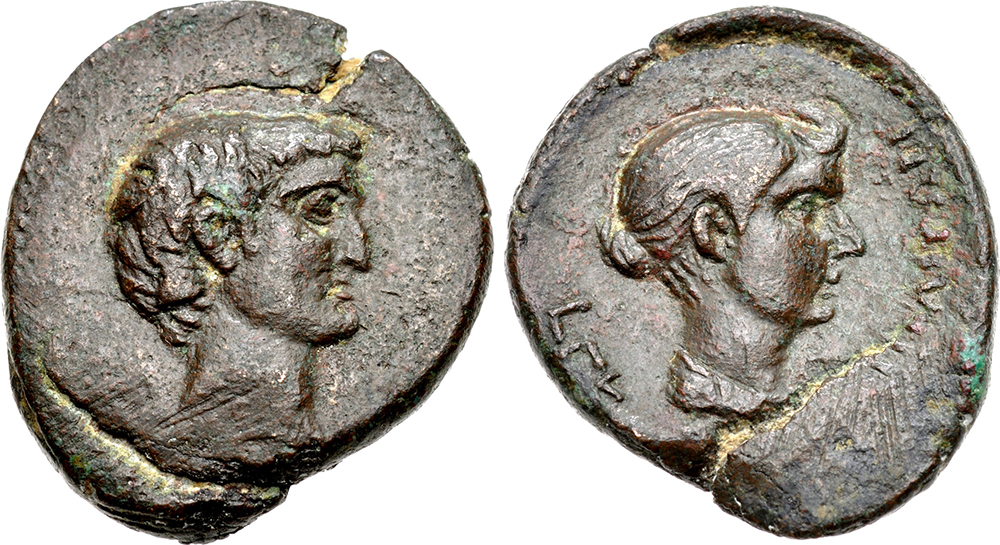
While Romans had a very conflicted relationship with powerful women, the inhabitants of the Eastern provinces had been long accustomed to royal power exerted by women and recognized that Fulvia had similarities to Seleucid and Ptolemaic queens in her display of power. In the words of O. Hekster, “the ‘Roman’ coins showing Antony’s wives should be interpreted in light of Hellenistic monarchical representations (p. 113).” In other words, the appearance of historical women on coins is directly related to a dynastic thought, thus representing the transition from the last decades of the Roman Republic into the Empire.
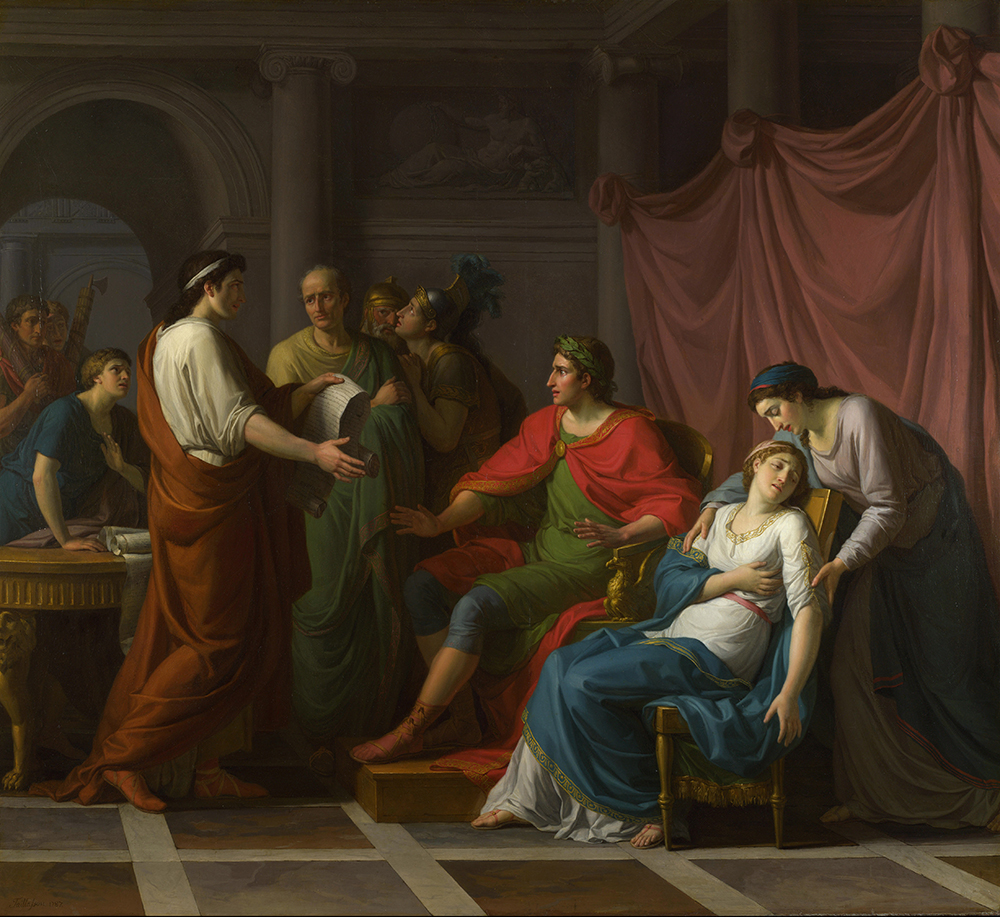
However, public recognition of power did not necessarily lead to public slander, as epitomized by Octavia.
Possibly bearing the exempla of the roughly contemporary Turia and Fulvia in mind, Octavia succeeded in conciliating public visibility, marital piety and general consensus, a feat never accomplished before by a Roman woman. She went down history as a “wonder of a woman.” Her good press is partly owed to her brother Octavian, but her agency and political ability—recognized in first place by her own brother—played no little part in the favor she encountered in life and in the aftermath of her death.
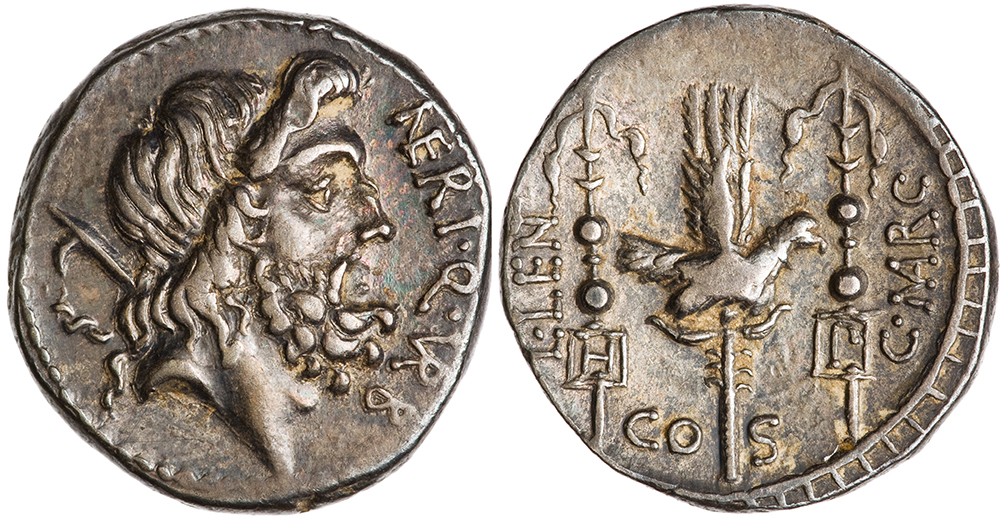
Octavia the Younger, or Octavia Minor, was the elder and only full sister of Octavian, the future emperor Augustus. Born around 66 BC, she was only three years older than her brother. A daughter of Atia and Gaius Octavius, she was the grand-niece of Julius Caesar. Still in her childhood, Octavia, together with her younger brother Octavian, was deeply involved in the turbulent years of the First Triumvirate, as conflicted loyalties threatened to tear apart their family. In 54 BC, while still in her early teens, she was married to Gaius Claudius Marcellus, a friend of Cicero and early opposer of her great-uncle Julius Caesar.
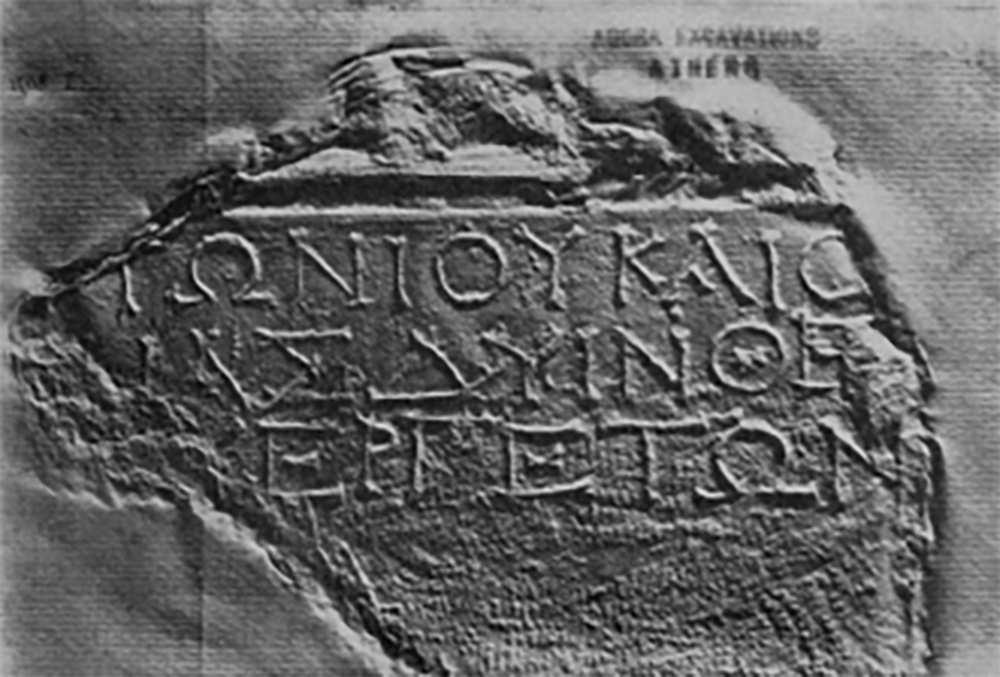
During his consulship in 50 BC, he tried to recall Julius Caesar from his proconsular power in Gaul and also prevented Caesar from standing for a second consulship in absentia, insisting that he should return to Rome to stand, without the protection of his armies in Gaul. In spite of this, Marcellus was eventually pardoned by Julius Caesar and recent scholarship suggests that Octavia’s mediation played no little role in this reconciliation.
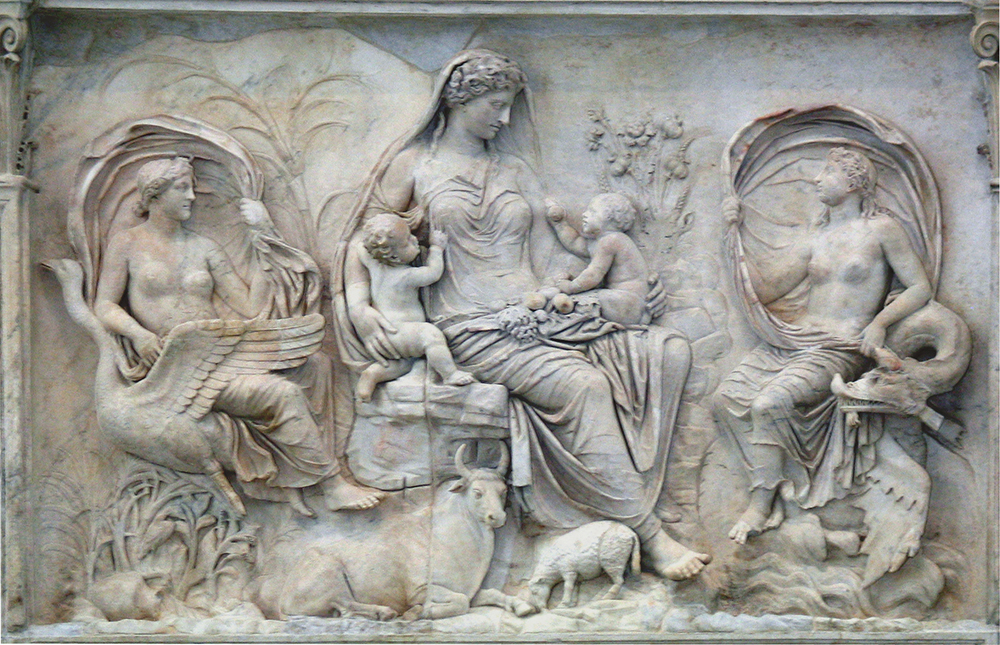
However, Octavia’s second marriage was the one that brought her everlasting fame and several dedications as a deity in the East. After the death of her first husband Marcellus in May 40 BC, she married Mark Antony in October 40 BC, foregoing the customary ten-month mourning period. This marriage was instrumental to the renewal of the political alliance between Octavian and Antony and thus bestowed ten more years of peace to the troubled res publica.
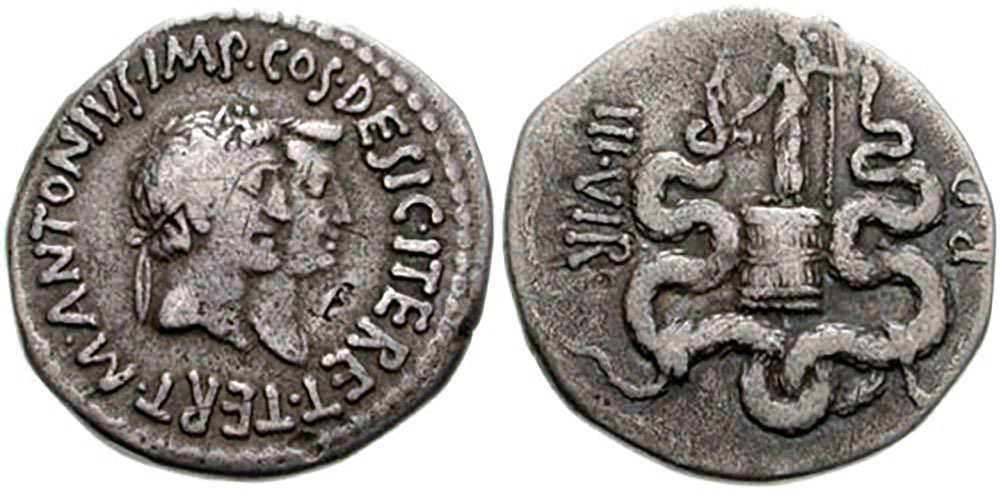
Its importance did not escape contemporaries, as famously exemplified by Virgil in his Fourth Eclogue, where he announces that “a glorious age shall begin/And the months enter on their mighty march.”
As to confirm the blessings bestowed to the world by the union of Antony and Octavia, the couple appears on the cistophori issued by the triumvir around 39 BC in the Province of Asia. On these coins, Octavia is represented in a jugate portrait with her husband, who is wearing an ivy wreath, an allusion of Antony’s title of ‘New Dionysus’, bestowed on Antony on his arrival in Ephesus in 41 BC (Plutarch, Life of Antony 26.1–3).
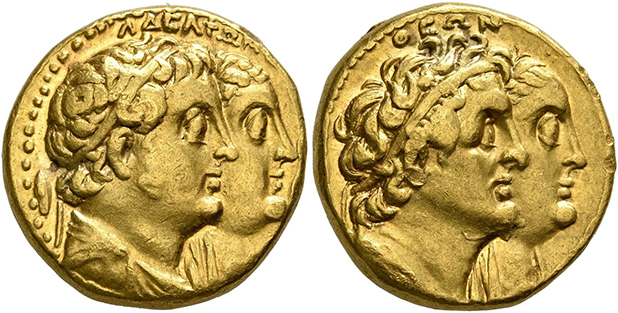
The god Dionysus himself is represented on the reverse. This is the first jugate portrait of a Roman couple on coinage and it is not by chance produced in the East, where jugate portraits for royal couples were the norm.
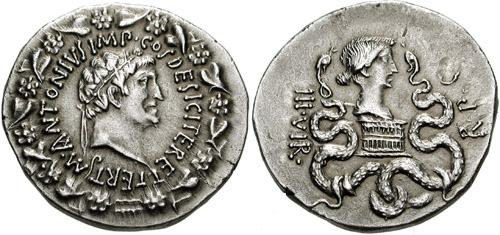
On a different series of cistophori, Antony is represented on the obverse as Dionysus and Octavia is on the reverse in Dionysus’ stead, almost suggesting that the couple replaces Dionysus in his role of protector of the region, as confirmed by already mentioned Plutarchean passage, where Antony is said to have entered Ephesus ‘for the common good of Asia.’
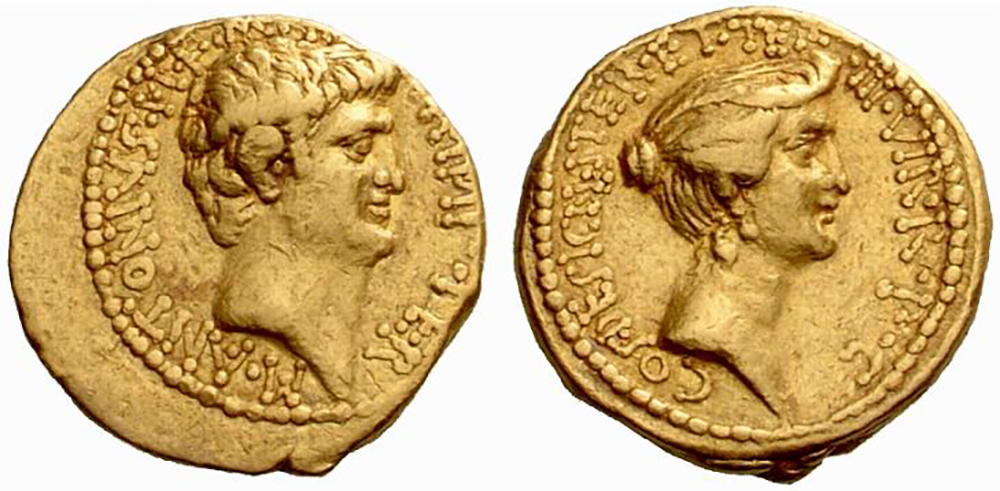
Antony and Octavia were also celebrated on rare aurei issued in 38 BC, the very first Roman couple to be represented on coinage.
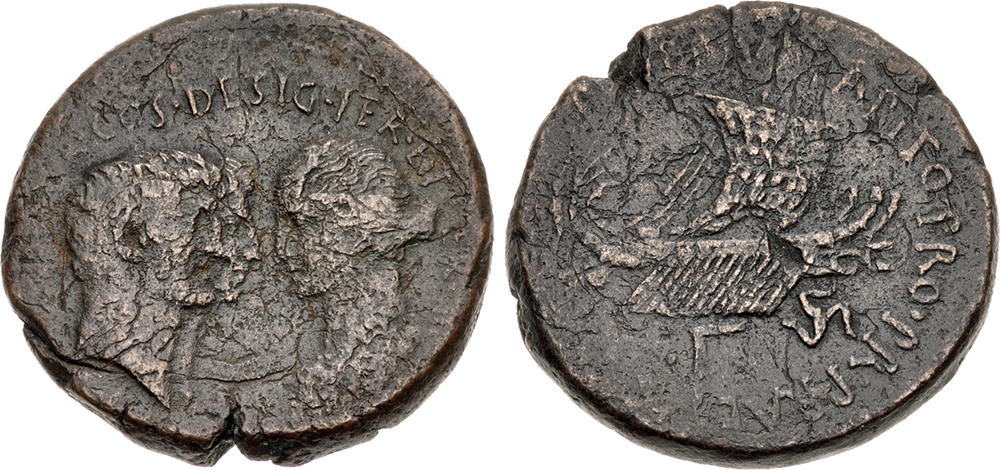
It is difficult to overstate the importance of these aurei, as they constitute the public acknowledgement of a de facto monarchic power for a Roman audience. Conversely, the absence of representations of Augustus and Livia, the first de iure imperial couple, on Roman official coinage constitutes a powerful answer to these aurei.
In the same years, Octavia’s role as a mediator between her brother Octavian and her husband Mark Antony is exemplified on the fleet coinage, issued between 38–36 BC in the Eastern provinces, where she is represented facing Octavian and Antony.
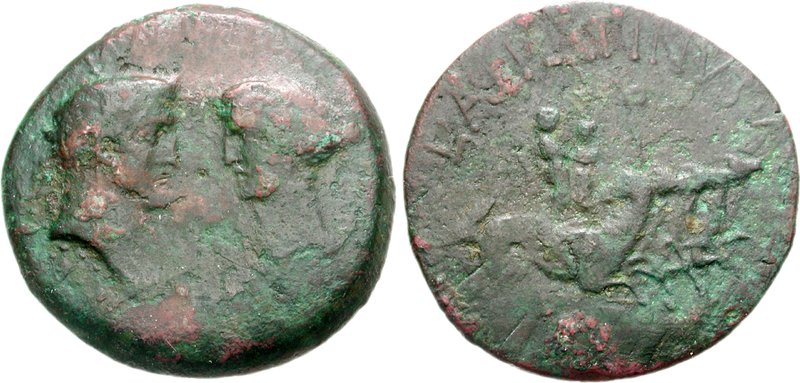
On other denominations of the same series, she is represented either facing Mark Antony or in a jugate portrait with him.
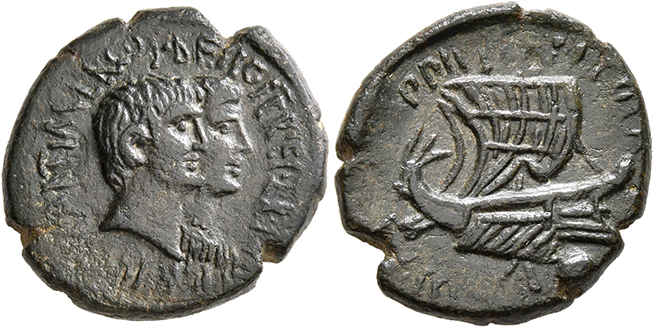
The importance of Octavia for the maintenance of the fragile political equilibrium of the Second Triumvirate is presented on an Ephesian bronze series dated to 43–36 BC, where the highest denomination presents on the obverse the portraits of the triumvirs Octavian, Antony and Lepidus, while the lowest has the portrait of Octavia.
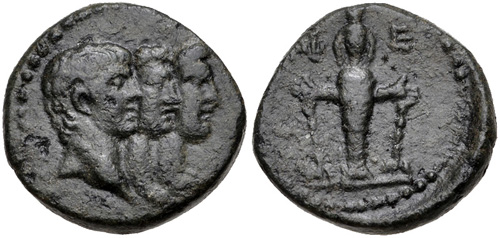
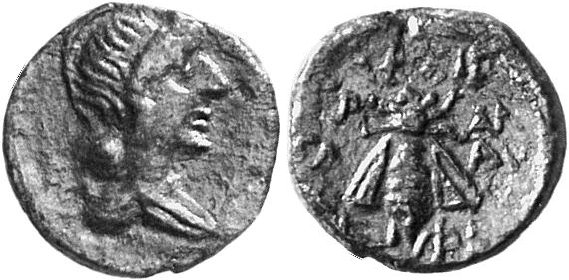
Literary sources are concord in stating that the intermediary role bestowed upon Octavia by her marriage in 40 BC was a role she willingly embraced and her political abilities prevented the outbreak of civil war until 32 BC, when Antony officially divorced her. After Antony’s death, she raised not only the children from her first and second marriages, but also Antony’s younger son Iullus by Fulvia as well as his children by Cleopatra. In doing this, she went well beyond her marital duty and succeeded in unifying the bloodlines of Octavian and Antony which, together with the descendants of Livia, Octavian’s wife, would sire the Julio-Claudian dynasty.
In sum, Octavia was really “a wonder of a woman”, as she succeeded in harmonizing the traditional roles of mother and wife expected of a matrona with an active life in the public eye.


